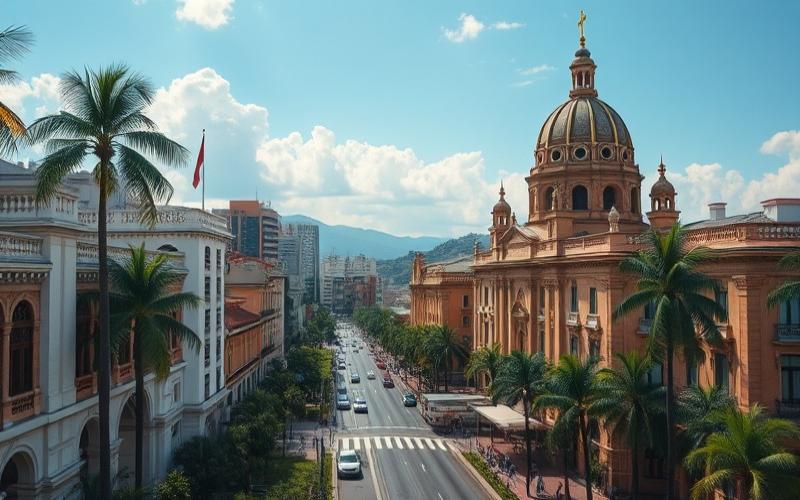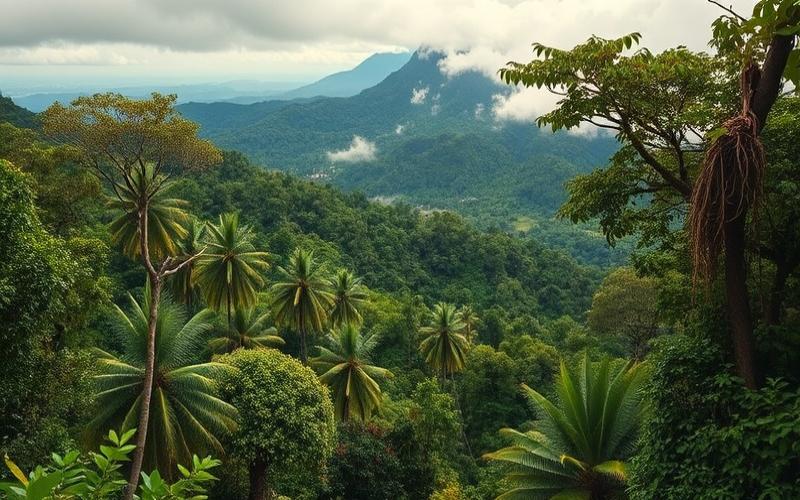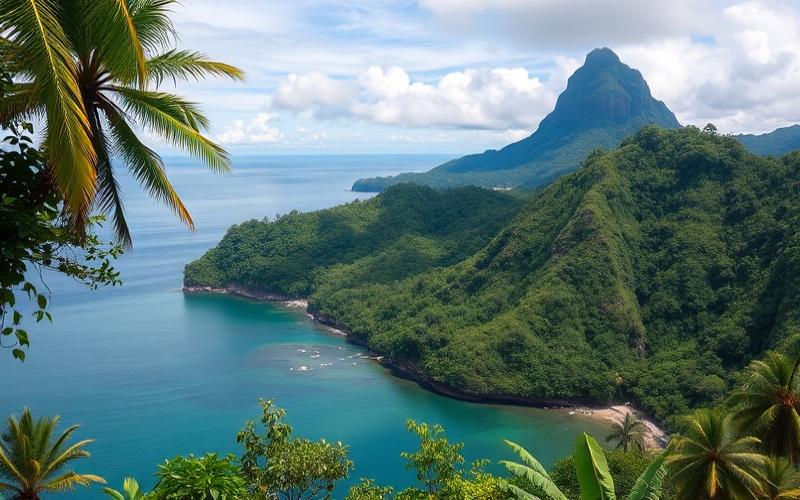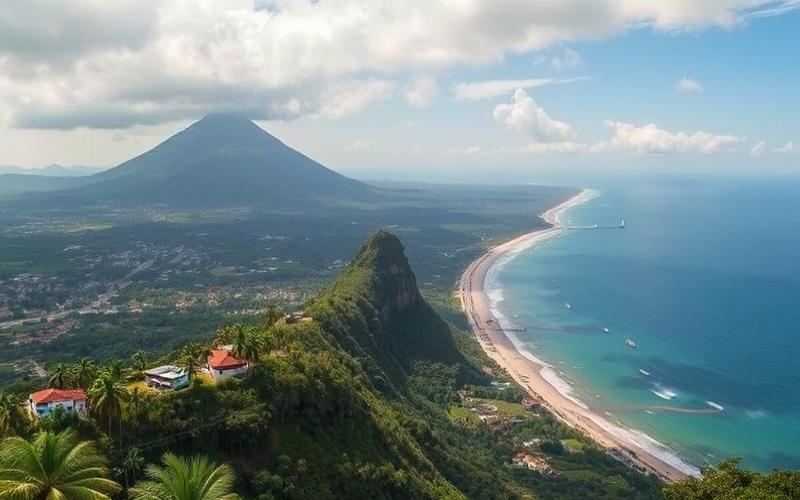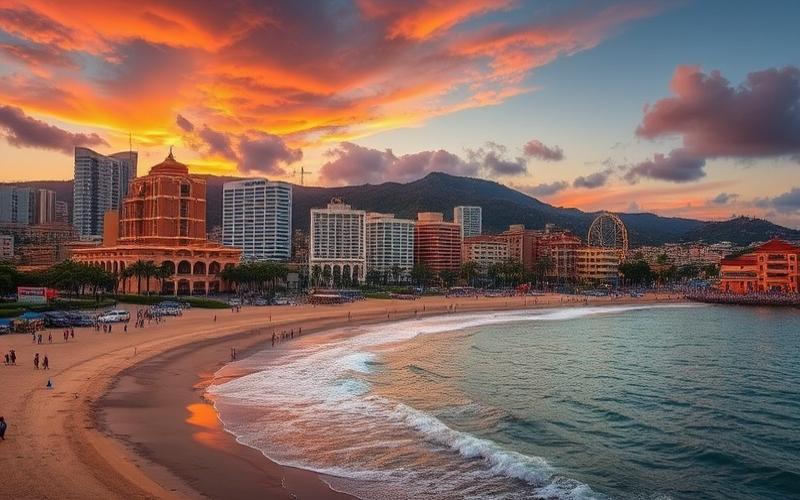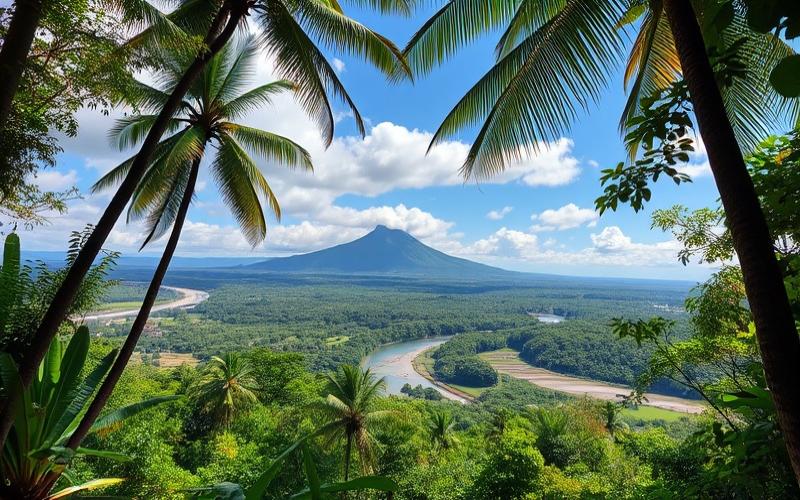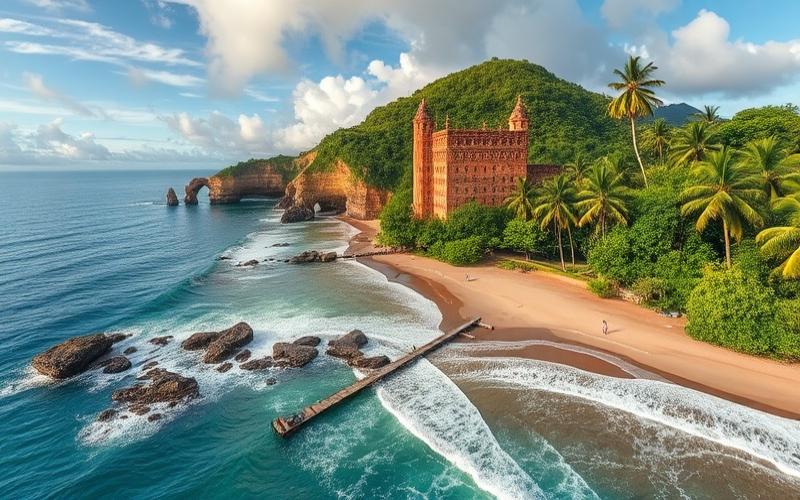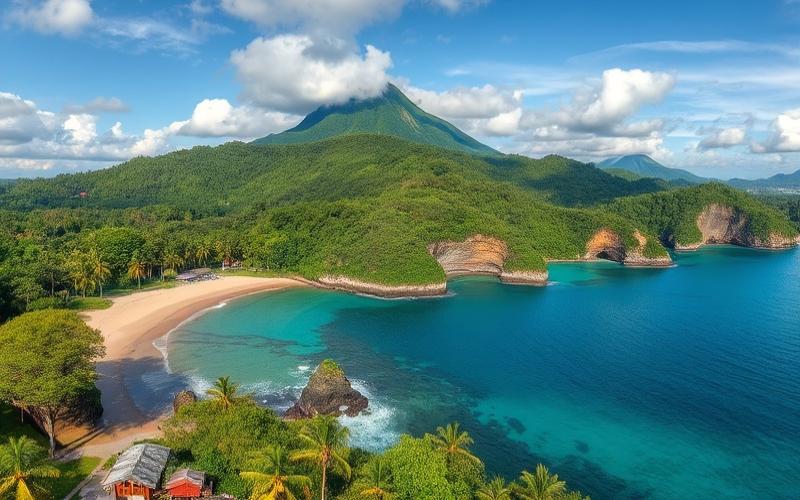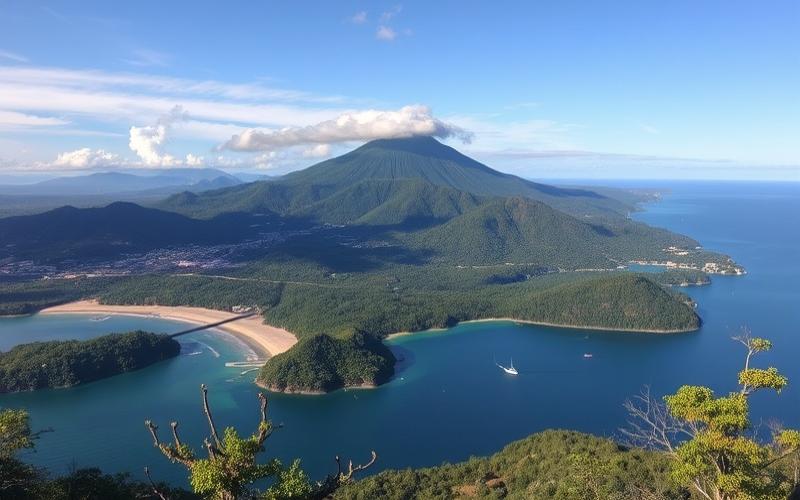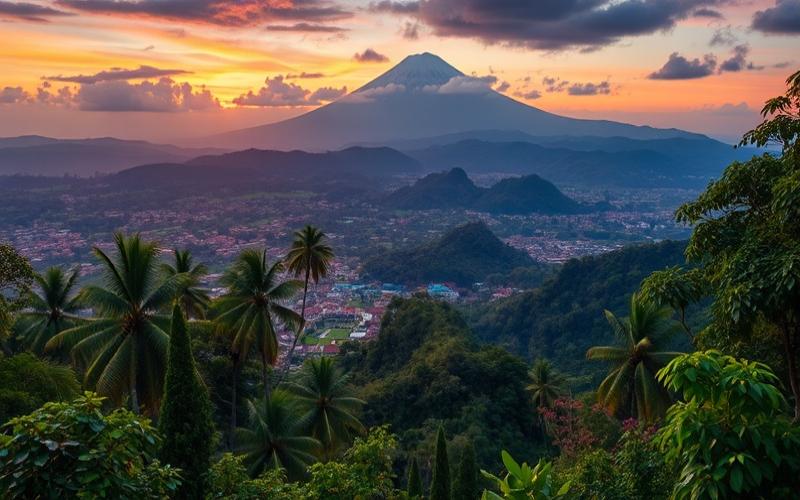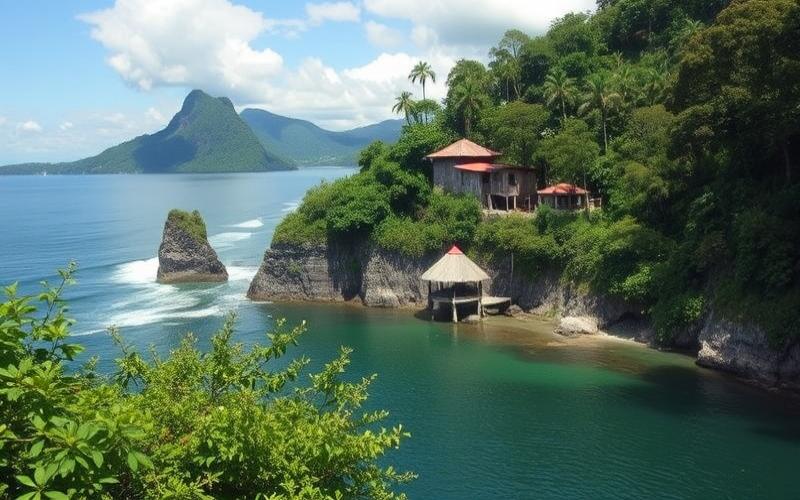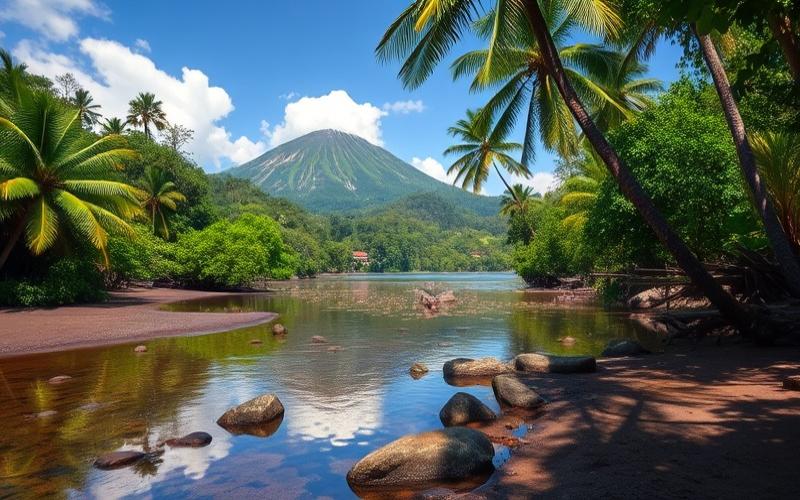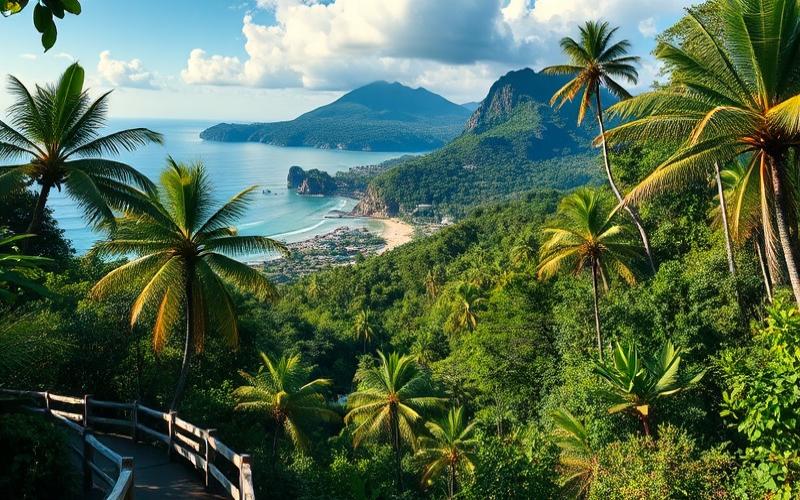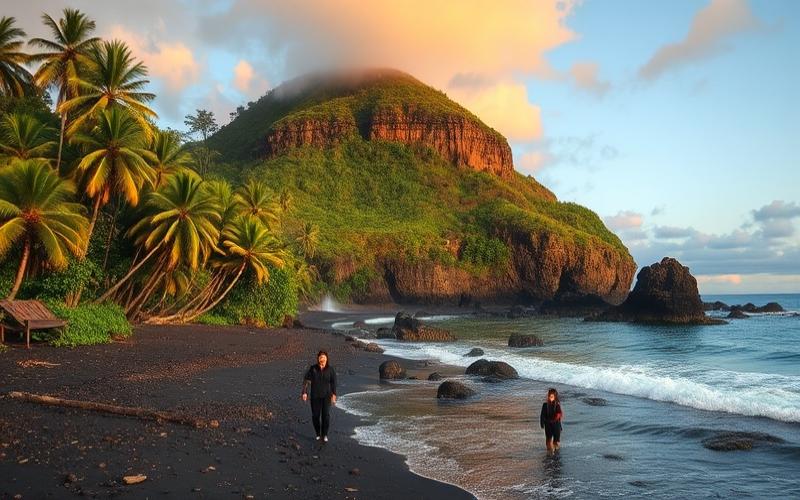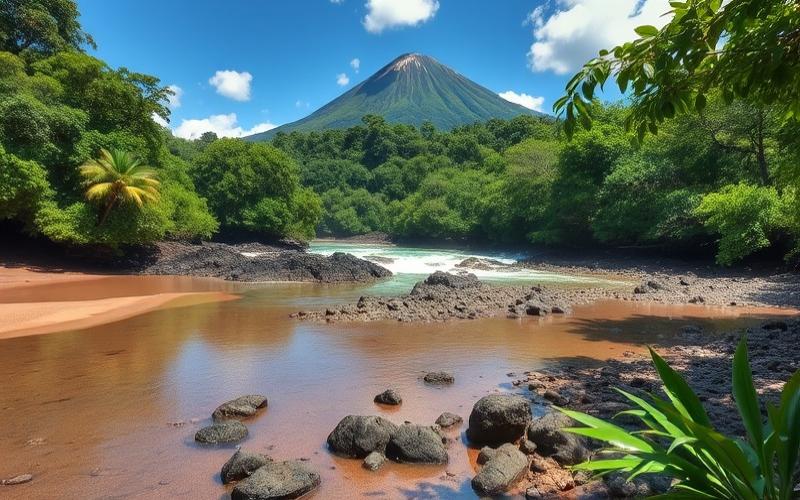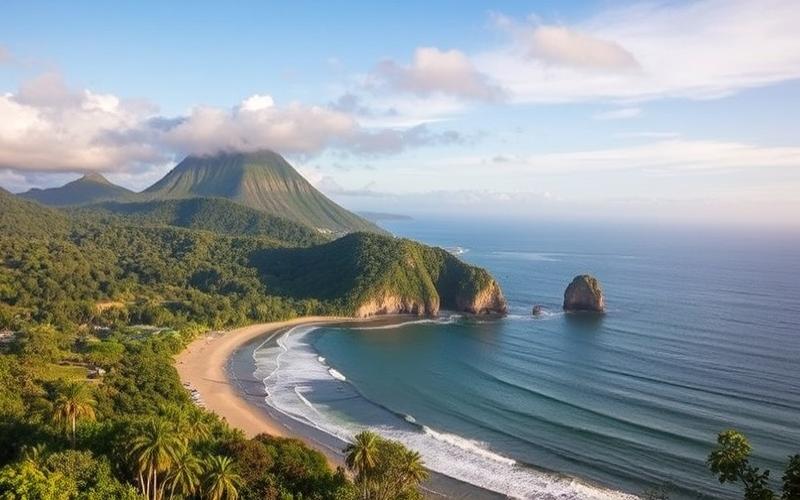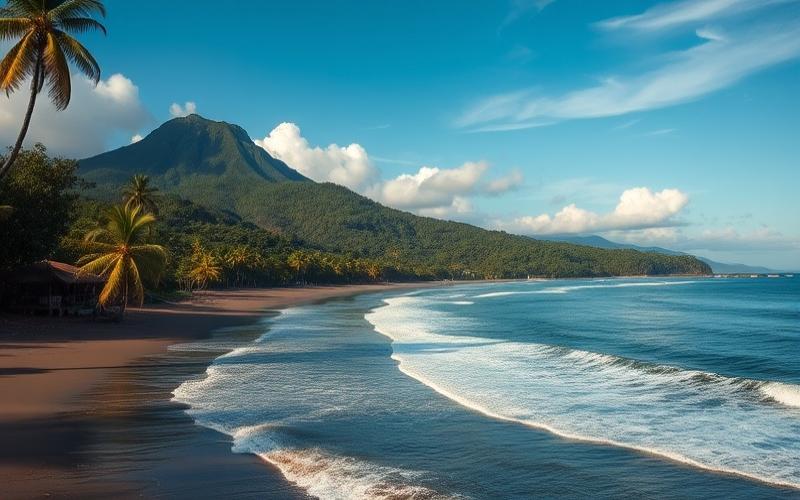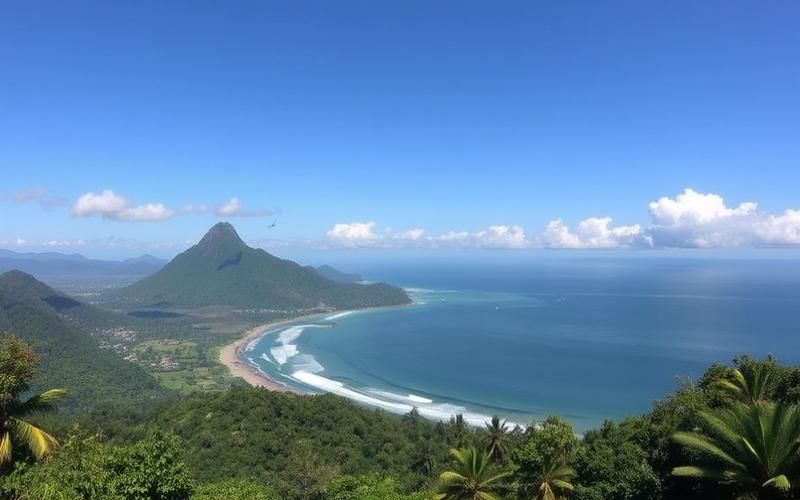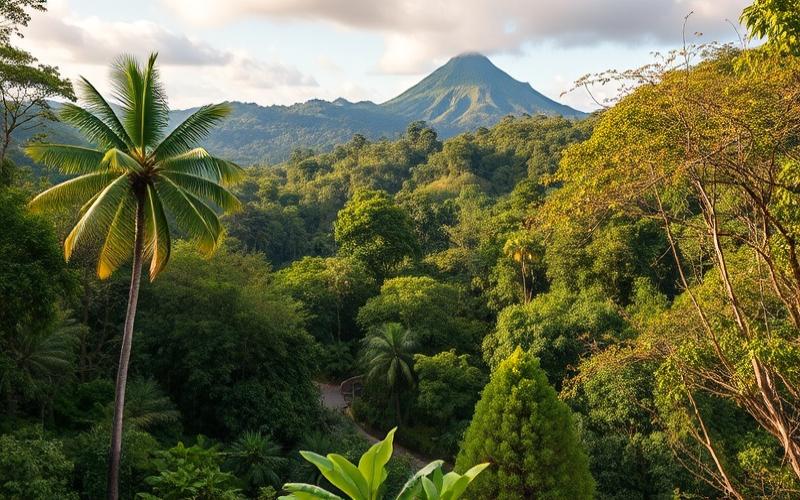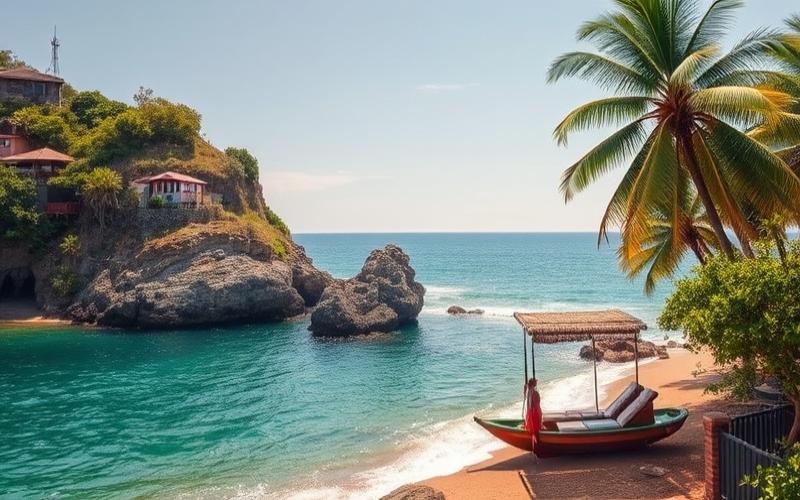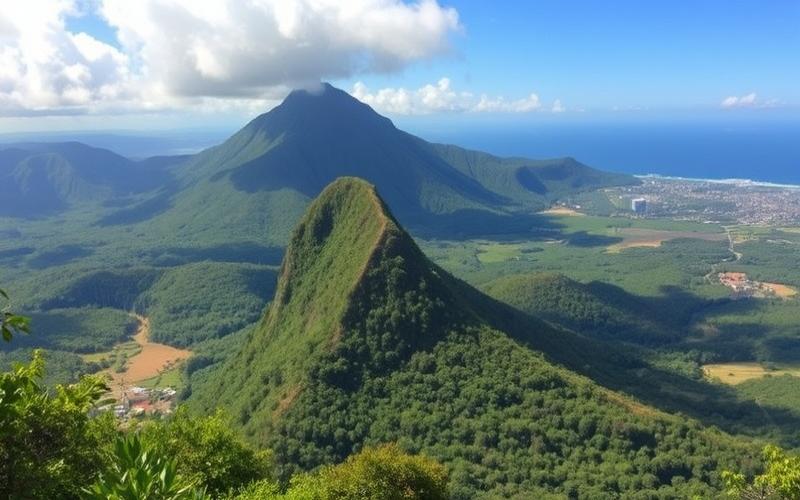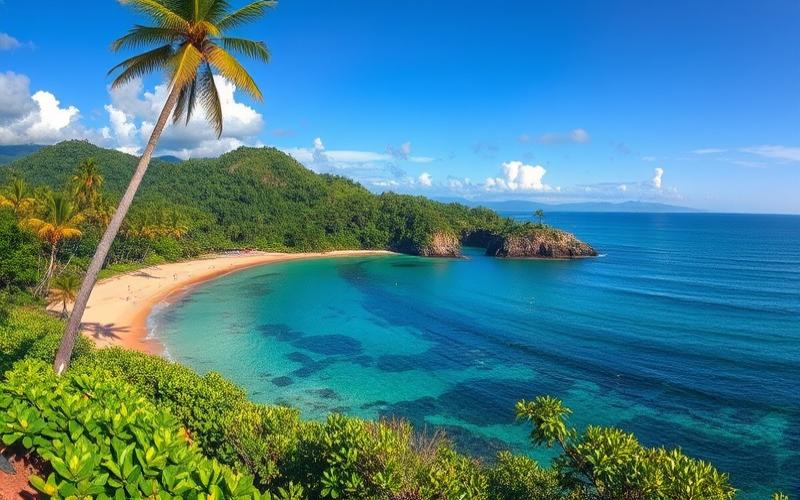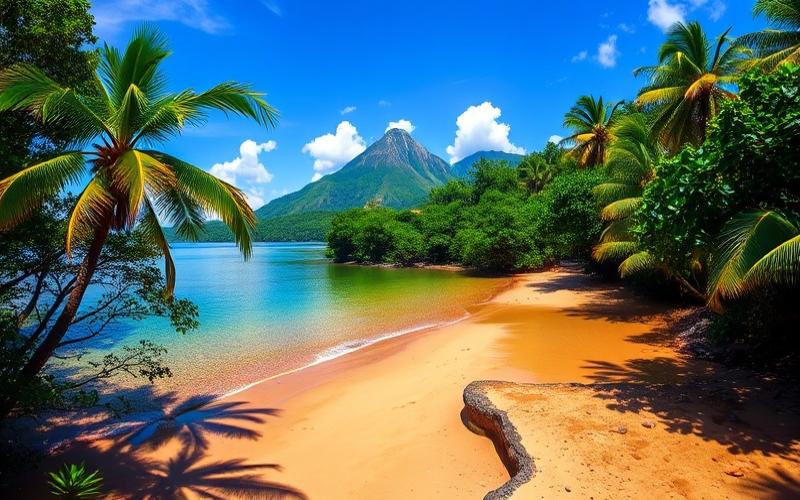
 Published on and written by Cyril Jarnias
Published on and written by Cyril Jarnias
Real Estate Comparison: Costa Rica vs. Neighboring Countries
In a context where real estate investment proves to be a favored strategy for many investors, the choice of country becomes crucial to maximize returns while minimizing risks. This comparison examines the real estate market in Costa Rica and its neighboring countries, such as Panama and Nicaragua, highlighting the advantages and disadvantages associated with each destination.
While Costa Rica attracts with its political stability, progressive environmental policies, and ever-increasing tourist appeal, Panama, bolstered by its global commercial influence, offers attractive tax opportunities for investors. Nicaragua, despite its economic and political challenges, is beginning to attract attention due to its lower entry costs.
This guide therefore explores these dynamics in depth to help readers make an informed choice based on their investment priorities.
Good to Know:
Costa Rica is often considered one of the most stable and attractive destinations in Central America for real estate investors, thanks to its favorable legal framework and preserved natural environment.
Analysis of the Real Estate Market in Costa Rica and Neighboring Countries
Current Trends in Costa Rica
- Average Price per Square Meter (2025)
- In the city: approximately €2,475.81 (min. €1,554.85, max. €4,579.08)
- In the countryside: approximately €1,333.86 (min. €788.35, max. €1,840.09)
- Varies by region and property type
| Region (Examples) | Average Price/m² (CRC) | Property Type |
| Puerto Viejo de Talamanca | 856,962 – 1,166,169 | Apt. / House |
| Santa Ana | 1,042,582 – 795,993 | Apt. / House |
| San José | 1,164,808 – 624,413 | Apt. / House |
| Jaco | 1,330,808 – 1,093,285 | Apt. / House |
| Tamarindo | 1,914,793 – 1,420,158 | Apt. / House |
- Attractive Regions for Investors
- Guanacaste (beaches, international tourism)
- Central Valley (San José, Escazú, Santa Ana: stability, services)
- Coastal areas like Tamarindo, Jaco, Manuel Antonio (high tourist demand)
- Types of Properties in Demand
- Luxury condos and villas in tourist zones
- Single-family homes for expatriates (Central Valley, beaches)
- Tourist rental properties (Airbnb, seasonal rentals)
Influencing Factors
Tourism: a major driver of demand, particularly on the Pacific and Caribbean coasts
Expatriate community: strong in Costa Rica, stimulating demand for higher quality properties
Foreign ownership policies: no major obstacles, foreigners can buy on the same terms as locals (except protected maritime zones)
Comparison with Neighboring Countries
| Country | Price/m² City (€) | Attractive Regions | Foreign Ownership | Eco. Stability | Influence of Tourism & Expats |
| Costa Rica | 2,475.81 | Guanacaste, Central Valley, Jaco | Easy, except public coastline | High | Very strong |
| Nicaragua | 900 – 1,200 | San Juan del Sur, Granada | Restrictions on certain lands | Low to medium | Moderate |
| Panama | 1,800 – 3,000 | Panama City, Boquete, Bocas del Toro | Very easy, tax incentives | Good | Strong (especially Panama City) |
| Belize | 1,200 – 2,200 | Ambergris Caye, Placencia | Easy, simplified procedure | Medium | Strong (English-speaking tourism) |
- Investment Opportunities
- Costa Rica: stability, mature market, appreciation potential, but higher prices.
- Nicaragua: attractive prices, but political instability and lower legal security.
- Panama: attractive taxation for retirees and expatriates, strong urban growth, increased transparency.
- Belize: developing market, appeal for North American investors, English as official language.
- Government Regulations
- Costa Rica and Panama: simple access to property for foreigners.
- Nicaragua: complexity in some cases, especially for areas near the coast.
- Belize: favorable environment, few restrictions.
- Economic Stability
- Costa Rica and Panama: considered the most stable in Central America.
- Nicaragua: political and economic volatility.
- Belize: relative stability, but smaller market.
Influence of Tourism, Expatriates, and Ownership Policies
Tourism: key factor in property valuation, especially in Costa Rica and Panama.
Expatriate community:
- Costa Rica, Panama: strong presence, adapted infrastructure.
- Nicaragua, Belize: growing communities, but sometimes limited infrastructure.
Foreign ownership policies:
- Costa Rica, Panama, Belize: simple procedures, transparent markets.
- Nicaragua: caution required, due to instability and land legislation.
Forecasts and Recommendations for Investors
2025-2027 Forecasts
- Costa Rica: continued moderate price increases, especially on the Pacific coast and Central Valley.
- Panama: sustained growth, particularly in urban and mountain areas (Boquete).
- Nicaragua: price volatility depending on the political situation.
- Belize: slow progression, but opportunities in hospitality and seasonal rentals.
Recommendations
- Prioritize Costa Rica or Panama for security, stability, and market liquidity.
- Explore Belize for longer-term investments in still underdeveloped areas.
- Avoid purchases in high-risk or complex legislation areas, particularly Nicaragua.
- Consider the strength of tourism and expatriate presence to maximize rental yield.
For investors seeking security and appreciation potential, Costa Rica and Panama offer the best prospects, while Belize presents a niche market to watch. Caution remains advised in Nicaragua, despite very attractive prices.
Good to Know:
The real estate market in Costa Rica attracts with average prices of $1,200 to $1,700 USD per square meter, particularly attractive in the Guanacaste and San José regions, favored by investors for second homes and tourism projects. Compared to neighboring countries, Costa Rica stands out for better economic stability and a growing expatriate community, partly due to favorable foreign ownership policies. In Nicaragua, although prices are lower, political instability dampens investor enthusiasm. Panama, meanwhile, displays a dynamic market with prices comparable to Costa Rica, but benefits from more developed infrastructure. In Belize, real estate is influenced by tourism and flexible policies regarding foreign investors. Forecasts indicate continued growth in Costa Rica, fueled by tourism development, although environmental regulations are stricter there. For investors, it is recommended to target tourist regions in Costa Rica while considering appreciation potential in Panama.
Real Estate Price Comparison: Costa Rica vs Neighboring Countries
| Country / Region | Average Price per m² (USD) | Average Price per m² (EUR) | Most Expensive Areas | Least Expensive Areas |
| Costa Rica (national) | 1,021 – 1,300 | 2,475.81 | Tamarindo, Nosara, Santa Teresa | Cartago, GAM peripheries |
| Panama (city) | 2,100 – 2,600 | ~2,000 – 2,400 | Panama City center, Coronado | David, rural areas |
| Nicaragua | 800 – 950 | ~740 – 880 | Managua center | Leon, Granada |
| Honduras | 700 – 850 | ~650 – 780 | Tegucigalpa center | La Ceiba |
Prices vary by precise location and property type. Euro conversions are indicative.
Factors Influencing Price Differences:
- Political stability:
- Costa Rica and Panama offer notable stability compared to their neighbors.
- Nicaragua and Honduras experience more political instability.
- Economy:
- Sustained growth and strong currency in Costa Rica; stable dollarized economy in Panama.
- More fragile economies for Nicaragua and Honduras.
- Tax policies:
- Significant tax attractiveness for foreign investment in Panama (frequent exemptions).
- Relatively favorable taxation in Costa Rica but increasing regulation on foreign real estate.
- Tourist attractiveness:
- Mass influx of foreigners in Costa Rica’s coastal regions: strong seasonal rental demand.
- Increased development of beach tourism in Panama; moderate growth for Nicaragua/Honduras.
Recent Real Estate Market Trends:
- In Costa Rica:
- Continuous price increase since the pandemic (+16% between late 2023 and early 2025).
- Major push on the North Pacific coast due to foreign investment and land scarcity in the central valley.
- Appreciation of the colón against foreign currencies which increases investment costs for some expatriates.
- In Panama:
- Slight post-COVID recovery driven by the arrival of South American/European expatriates seeking economic/fiscal stability.
- In Nicaragua & Honduras:
- Low market dynamism. Prices remain low due to persistent political uncertainties. Lesser impact from the pandemic but little rebound after the health crisis.
Key Points Raised by Potential Buyers or Real Estate Experts:
“I chose to invest in Costa Rica despite a higher cost because it’s a safe country with excellent quality of life and strong year-round tourist rental demand.”
— Canadian expatriate buyer
“The Panamanian market remains attractive tax-wise but you must target modern central neighborhoods or high-end coastal areas to hope for real appreciation.”
— International real estate agent
“Outside of major regional or tourist capitals like Granada in Nicaragua or La Ceiba in Honduras, there is little liquidity in these markets… The risks are higher but it can appeal to those looking for a very low entry ticket.”
— Regional consultant
Main Visual Takeaways:
Approximate Evolution of Average Urban Residential Price/m² in USD Costa Rica ──────▇▇▇▇▇► continuous increase Panama ──────▇▇► moderate increase Nicaragua ──────▬► stable/low Honduras ──────▬► stable/low
Synthetic List of Main Criteria When Choosing Country/Region:
- Legal/political security
- Actual vs expected rental yield
- Administrative/tax ease for foreigners
- Local tourist potential/direct international access
Good to Know:
In Costa Rica, the average residential real estate price in 2023 is approximately $1,800 USD per m², which is higher than Nicaragua ($1,200/m²) and Honduras ($1,100/m²), but comparable to some regions in Panama where it can reach $2,000/m². These variations are influenced by Costa Rica’s political and fiscal stability, with its reputation as a haven of peace and strong tourist potential, unlike the more uncertain economic dynamics of its neighbors. Since the pandemic, the Costa Rican real estate market has shown remarkable resilience, attracting investors seeking security and profitability, while testimonials from potential buyers highlight the diversity of offerings and exceptional quality of life in Costa Rica as determining factors. Comparative trend graphs of prices reveal a slight increase in Costa Rica, while the market in Nicaragua and Honduras remains relatively stable.
Real Estate Taxation: Costa Rica Compared to Its Neighbors
| Country | Property Tax Rate | Capital Gains Tax | Exemptions/Reductions for Foreigners | Tax Procedures | Recent Reforms |
|---|---|---|---|---|---|
| Costa Rica | 0.25% of cadastral value | Taxed on gain upon sale (generally 15%) | No specific exemptions for foreigners, but non-residents are treated like residents for property | Annual payment to municipality; simple declaration | Tax stability, no major recent reforms affecting real estate taxation |
| Panama | Progressive: 0% to 1% depending on value and property age; exemption up to 20 years for new properties ≤$120,000 | 10% on capital gain generally | Generous exemptions for new properties, retirees, and certain tourism investments | Annual declaration and payment, simplified digital procedure | Enhanced tax incentives for sustainable and tourism investment since 2024 |
| Nicaragua | 1% on cadastral value (after deduction of first bracket) | 10% on capital gain | No notable exemptions for foreigners; uniform tax regime | Payment to local authorities, sometimes complex procedures | Few reforms, market affected by political instability |
| Guatemala | Approx. 0.9% to 0.98% depending on value | 10% on capital gain | No major exemption for foreigners | Annual payment, standard administrative steps | No major recent tax reforms |
Additional Details:
Costa Rica
- Advantage: Very low and stable property taxation, simplicity of procedures, no discrimination towards non-residents.
- Disadvantage: Absence of specific exemptions for foreigners or investors, progressive price increases in sought-after areas.
- The capital gains tax generally applies at 15% of the net gain, except for primary residences under certain conditions.
- Real estate investment remains attractive for foreigners, with rights identical to those of nationals.
Panama
- Advantage: Property tax exemption up to 20 years on new properties and attractive measures for retirees; progressive rate limiting tax burden.
- Disadvantage: More complex system, stricter declaration obligations, frequent reforms that can bring uncertainty.
- Since 2024, new tax benefits encourage investment in ecotourism and sustainable construction.
Nicaragua
- Advantage: Very low acquisition and living costs, relatively simple taxation.
- Disadvantage: Political instability, lower legal security, few tax advantages for foreigners.
- Taxation on capital gains and property is uniform, without particular incentives.
Guatemala
- Advantage: Relatively moderate taxation, accessible market.
- Disadvantage: No particular advantages for foreign investors, standard administrative procedures.
Tax Implications for Residents and Non-Residents:
In all these countries, non-residents can own real estate and are subject to the same rates as residents.
In Costa Rica and Panama, the payment procedure is annual and done mainly via the municipality or online.
Real estate capital gains are taxed upon sale, generally via withholding at source.
Recent Reforms and Impact on the Market:
– Panama introduced incentive measures targeting sustainable investments, strengthening attractiveness for foreigners in tourist and ecological real estate.
– Costa Rica maintains a stable tax policy, without significant increases in real estate taxes, which reassures investors.
– Nicaragua and Guatemala have not introduced major recent reforms, but institutional stability remains an issue.
Advantages of Real Estate Taxation in Costa Rica:
- Very low and stable property tax rate.
- Simple procedures and absence of discrimination towards foreigners.
- Predictable tax environment, legal security superior to that of Nicaragua or Guatemala.
Disadvantages:
- No specific exemptions or reductions for new foreign investors, unlike Panama.
- Rapid price increases in attractive areas.
Summary of Regional Tax Choices for the Real Estate Investor:
- Costa Rica: stability and simplicity, low rates but few incentives.
- Panama: advantageous taxation for new investments and retirees, more complex system.
- Nicaragua: low entry cost, but political and tax risks.
- Guatemala: neutral taxation, without major incentives or barriers.
For a foreign investor seeking stability and tax predictability, Costa Rica remains a safe bet, while Panama will appeal to those prioritizing short-term exemptions and sectoral incentives.
Good to Know:
In Costa Rica, the property tax is 0.25% of the property value while capital gains are taxed at 15%; in Nicaragua, the property tax varies from 1% to 2%, and capital gains also at 15%, but with more possibilities for exemptions for first sales. Panama offers a progressive property tax rate from 0% to 0.7%, but also imposes a capital gains tax at 10%, while offering significant reductions to foreign retirees. Guatemala offers a property tax of 0.9% and 15% on capital gains, with certain reductions for diversified investments. Residents in Costa Rica benefit from tax exemptions if properties are for personal use. Recent tax reforms in Costa Rica aim to modernize the system but slightly increase the tax burden for non-residents compared to the incentives offered in Panama. This makes Costa Rica a preferable destination for investors focused on long-term gains, although Panama offers tax flexibility for the short term, particularly for retirement.
Disclaimer: The information provided on this website is for informational purposes only and does not constitute financial, legal, or professional advice. We encourage you to consult qualified experts before making any investment, real estate, or expatriation decisions. Although we strive to maintain up-to-date and accurate information, we do not guarantee the completeness, accuracy, or timeliness of the proposed content. As investment and expatriation involve risks, we disclaim any liability for potential losses or damages arising from the use of this site. Your use of this site confirms your acceptance of these terms and your understanding of the associated risks.



